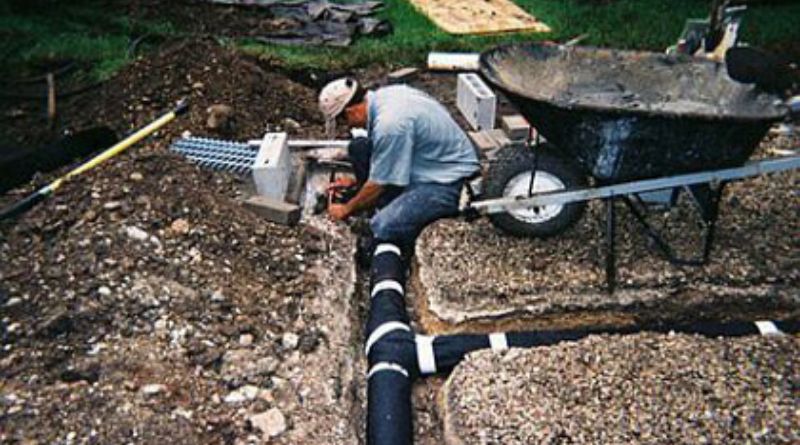Preventing Flooding: Essential Residential Drainage Solutions
Key Takeaways
- Effective residential drainage solutions are vital for preventing flooding and water damage.
- A variety of drainage systems can suit different environmental and property needs.
- Regular maintenance of drainage systems ensures long-term functionality and safety.
Why Drainage Matters
Residential drainage solutions play a critical role in protecting homes from water damage. Proper drainage systems help divert excess water away from the property, preventing issues such as flooding, foundation damage, and landscape erosion. According to experts, effective drainage solutions St Louis MO can significantly enhance the overall safety and durability of the home environment.
Whether you’re constructing a new home or maintaining an existing one, understanding the importance of efficient drainage is essential. Flooding can result in long-term structural problems that are expensive to fix as well as damage to personal possessions. By investing in a robust drainage system, homeowners can save themselves from numerous headaches down the road. Establishing a drainage plan early on can prevent landscape erosion, maintain soil integrity, and ensure that water does not pool in undesirable places after heavy rains.
Types of Drainage Systems
There are various drainage system kinds that are available, and each is made to meet particular requirements related to the environment and properties. Homeowners can make well-informed decisions that best fit their particular situation by being aware of these options. While some drainage systems focus on surface water, others deal with groundwater. Homeowners must consider their specific situation to choose the right solution. The main types of residential drainage systems include French drains, surface drains, and slope drainage. Each type offers unique benefits and caters to different aspects of water management, ensuring comprehensive coverage against potential water damage.
French Drains
French drains are one of the most popular residential solutions. They are made up of a perforated pipe that channels water away from the house and a gravel-filled trench. According to Bob Vila, these systems are highly effective in managing groundwater and preventing basement flooding.
Installation involves digging a trench around the affected area and lining it with gravel. A perforated pipe is then laid down to collect water and channel it away from vulnerable spots. This arrangement lessens the chance of water seeping into crawl spaces or basements by lowering moisture levels near the foundation and managing groundwater. Additionally, the gravel-filled trench helps to filter out impurities from the water, ensuring that only clean water is redirected. This benefits homes and contributes to the overall health of the surrounding landscape.
Surface Drains
Surface drainage systems involve shallow ditches or channels designed to capture and direct surface water runoff. These devices are especially helpful in places where there is a lot of rainfall. Coverage and efficiency can be maximized by installing them in strategic locations where water accumulation is most likely to occur.
These drains can be a great solution for properties with large expanses of hard surfaces, like driveways or patios, which can cause water to pool. By strategically placing surface drains, homeowners can redirect water flow away from these areas, ensuring that rainwater is quickly and efficiently removed. Additionally, customizable surface drains give homeowners the option to choose grate patterns that blend in with their landscaping, enhancing the property’s visual attractiveness and practicality. Additionally, surface drains are a reasonably affordable choice for many homeowners due to their ease of installation and upkeep.
Slope Drainage
Slope drainage leverages the natural gradient of the land to facilitate water movement away from the property. By positioning drains or diversion channels along a sloped terrain, water can be effectively guided to safer areas, reducing the risk of erosion and structural damage. This technique aligns with suggestions in resources like Family Handyman.
One of the key benefits of slope drainage is its ability to work with nature, rather than against it. By understanding the natural water flow on your property, you can implement drainage solutions that harness this flow, avoiding the need for extensive and costly earthworks. Slope drainage is particularly beneficial for homeowners with hilly or uneven terrain, as it allows them to manage water runoff without significant landscape alterations. Additionally, this method promotes healthy plant growth by ensuring that water is evenly distributed across the landscape, preventing both waterlogging and drought conditions.
Maintaining Your Drainage System
Any drainage system’s long-term operation depends on routine maintenance. Routine inspections, clearing debris, and checking for any damage or blockages are necessary steps. Proper upkeep not only prolongs the life of the drainage system but also prevents unforeseen issues that could result in costly repairs.
For instance, clearing leaves and other debris from surface drains can prevent blockages that might lead to water pooling. Similarly, inspecting and maintaining subsurface drainage solutions, like French drains, ensures that they remain effective at diverting groundwater away from your home’s foundation. Regular cleaning and maintenance also help identify potential issues early, allowing homeowners to address them before they escalate into more significant problems. In addition to routine checks, professional inspections should be scheduled periodically to evaluate the system’s overall performance and to make necessary adjustments.
Choosing the Right System for Your Home
Deciding on the best drainage system for your home involves assessing your property’s unique needs and conditions. Consider factors such as the topography, soil type, and average rainfall. Consulting with drainage professionals can also provide valuable insights, helping you select a system that offers maximum protection and efficiency.
Moreover, combining different drainage solutions can often provide the best result. For example, integrating both surface and subsurface drains can ensure that all types of water issues, whether from heavy rainfall or rising groundwater, are addressed effectively. A tailored approach, which blends multiple drainage methods, can offer comprehensive protection and peace of mind. Homeowners should also consider future landscaping or renovation projects when designing their drainage systems to ensure that the solutions implemented today will remain effective for years to come. Investing time and resources in understanding and implementing the right drainage system can significantly enhance the longevity and safety of your property.




